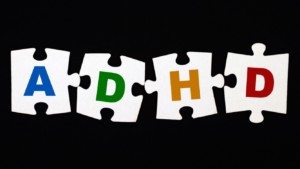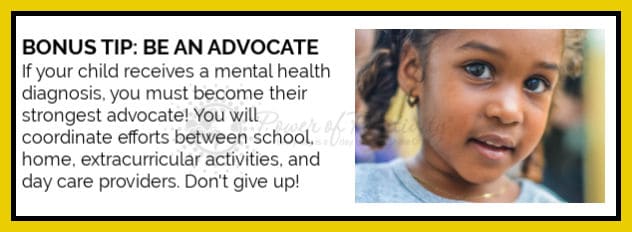A panic attack is an unexpected episode of extreme emotions like fear or anxiety. Your body reacts by halting some functions. Your heart beats rapidly, you are unable to breathe, you start sweating, and you feel like you are In danger.
Some episodes are wild that you feel like you are dying. Panic attacks give no warning. Everything happens abruptly and sometimes during weird hours.
You can get a panic attack when you are sleeping or when you are just sitting. There are three types of panic attacks; situational (cued), unexpected (uncued) and situationally predisposed.
Panic attacks in children are worse as kids sometimes do not know that they are experiencing such episodes. The child may not be aware of the situation, but as a parent, you need to take note of the things they complain about.
Panic disorders happen at weird times. You could be sleeping or just sitting and experience an episode. Panic attacks could last minutes or even hours.
Panic attacks are not fun at all. They make kids develop fears which they previously didn’t have.
Agoraphobia is one of the major effects of panic attacks. Kids become fearful of the places where they had a previous panic attack. Agoraphobic children will also avoid situations that can cause a repeat of the episodes.
Signs you should look out for to identify panic attacks in children
1 – Meltdowns:
Children express their irritability at things all the time, so you are probably used to them having meltdowns. They will get angry at petty and the most minute things throughout the day.
Kids throw tantrums when they are exhausted or swamped up by something. Children also show rage when they are experiencing panic disorders.
Extensive and regular meltdowns are not good characteristic in kids. Watch how often they get angry and at what times they have the periodic meltdowns.
Anxiety in children is portrayed in irritability, bad temper, intense rage, and anger. Do not overlook these signs as they could be more than what they appear to be.
2 – Solitude:
Anxiety and panic attacks make some children crave isolation more than interaction with other children. The kids will shun away from people who appear friendly to them in the hope of being left alone.
A child who loved hanging out with their peers after school will stop doing that and head straight home where they will spend hours locked in their room.
They will avoid taking part in tasks or doing their favorite activities. Look out for kids who prefer isolation and evasion as they could be having panic attacks without your knowledge.
3 – Children become even more inquisitive:
A child who has anxiety issues or has in the past has a panic episode is usually very inquisitive. They will ask questions about specific things.
This could be to satisfy their curiosity or as concern for their safety. Remember that panic disorders make children agoraphobic. Their asking questions may be to determine how safe the spaces they are in are.
They are also concerned about the safety of the people close to them. This could be family, friends, or educators. They repeat the same questions all the time and will constantly seek validation from their guardians.
4 – Psychosomatic complaints:
Kids will have psychosomatic complaints when they feel that they are experiencing physical pain in the body.
Does your child complain of random stomach aches or headaches? A child will not keep quiet when they experience this sort of pain. Ask them which part of the body feels sore.
The child could also be experiencing chest pains and muscle aches. Does your kid complain of difficulty in chewing and swallowing food? Do they suddenly feel dizzy when you are sitting together?
These are the signs that will help you identify a panic disorder in a child. Frequent body pains and unusual complaints should be a cause for alarm.
5 – Avoiding certain places:
You will notice that your child suddenly dislikes goings for a play date, hates going to school or visiting the local swimming pool.
These are places that they previously loved going to. They enjoyed swimming, playing with their peers, and going to school, but the urge disappeared out of nowhere. Take this as a red flag.
Refusal by children to go to certain places could be because the places trigger panic attacks. Talk to their teachers and the people they interact with to see if they have ever had panic attack episodes that you are not aware of.
6 – Melancholy:
Does your child appear to be in a disturbing and sad state 24/7? Your baby will seem worried and anxious even during occasions that they would otherwise seem happy.
Observe if they get emotional during certain periods. A gloomy mood could be symptomatic of a panic attack and anxiety in a child.
Anxious children may seem clingy, feel bad when you leave them, feel insecure, and generally unhappy. You won’t be surprised to find them breaking down every now and then for no apparent reason. The child may also appear distressed and vexed.
7 – Minimum Concentration:
You will notice the concentration levels of your child reduce. They will get distracted every few minutes and struggle to focus.
The child will also lose interest in whatever activity you engage with them. This may affect them in school as their grades will drop due to poor concentration.
A previously attentive child will act unbothered by what you are doing and what they should focus on. Anxiety and panic disorders make children less attentive.
How to Assist Children Who Experience Panic Attacks
1 – Use non-scary terms when explaining the attacks:
Do not use deep, technical words when talking about anxiety and panic attacks to children. This will only make them more scared than they already are.
Some children think that their world is ending when they experience these episodes. Try and use kind words that will make them feel that they are safe.
Call it harmless anxiety, or any other phrase that will not scare them. Using deep terms can trigger other things you had not prepared for. Be as gentle as possible as you try to inform them about their situation.
2 – Be in control:
The child is startled and nervous. They are in a state of confusion and do not know what is next.
Be in charge and show them that everything will be alright. Call out the child’s name and remind them that everything will be fine.
You must make the child feel safe and comfortable. Do not be panicky yourself as this will make them more fearful.
3 – Reduce avoidance:
Children will naturally not want to go to the places where the panic attacks occurred. This is because they imagine a repeat of the episodes when they are there.
Be the one to encourage them when they have doubts about visiting the said places. You can try the option of inspiring a steady re-establishment to the various situations that caused avoidance if you are unable to convince them to go back to the places they avoided.
4 – Be calm:
How you show your concern may affect how the child takes the whole situation. Do not be jumpy or too stressed. The child will pick this behavior from you.
The model being calm by assuring the child that the situation they are in is temporary. A panic attack is serious. Do not, however, be too serious when handling the situation as it will instill fear and weakness in the child. Go about the treatment normally and be strong for the kid.
5 – Be observant of the physical symptoms the child exhibits:
Do they have weird sleeping patterns? Have they changed their eating habits? How are their bowel movements?
Are they complaining of body pains at an alarming rate? Note every change you see in the kid. Physical symptoms of panic attacks are visible and easily noticeable. Journey with them as they face these challenges.
6 – Be their support system:
Remember that you are dealing with a child who possibly thinks that anxiety attacks can kill them. Be free with them and let them express what they feel without being scared of how you will react.
Let them vent if they need to. Be prepared to handle them when they are irritated gently. Give them ample time to settle after they experience panic attacks. Do not rush them or force them to do anything they are not comfortable with.
7 – Children need to be monitored at all times.
They may be incapable of expressing how they feel, and that is why parents are encouraged to watch their children at all times. Panic attacks are common but treatable.
Final Thoughts: When Professional Intervention is Needed For Panic Attacks in Children
There are several hospitals in the country that treat and stabilize patients who have anxiety issues and panic attacks. Children are vulnerable and frightened when they experience these episodes. And, don’t forget to take time to yourself. Your self-care matters!
It is good to once in a while, inform your child about the attacks, as this will make them less worried and more informed about their situation. Talk to their educators and health experts about your child’s panic attacks for it to be treated during the early stages.















 Community
Community

